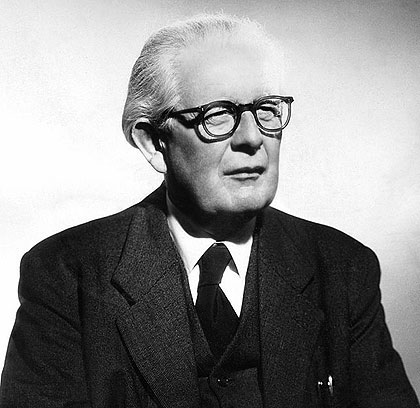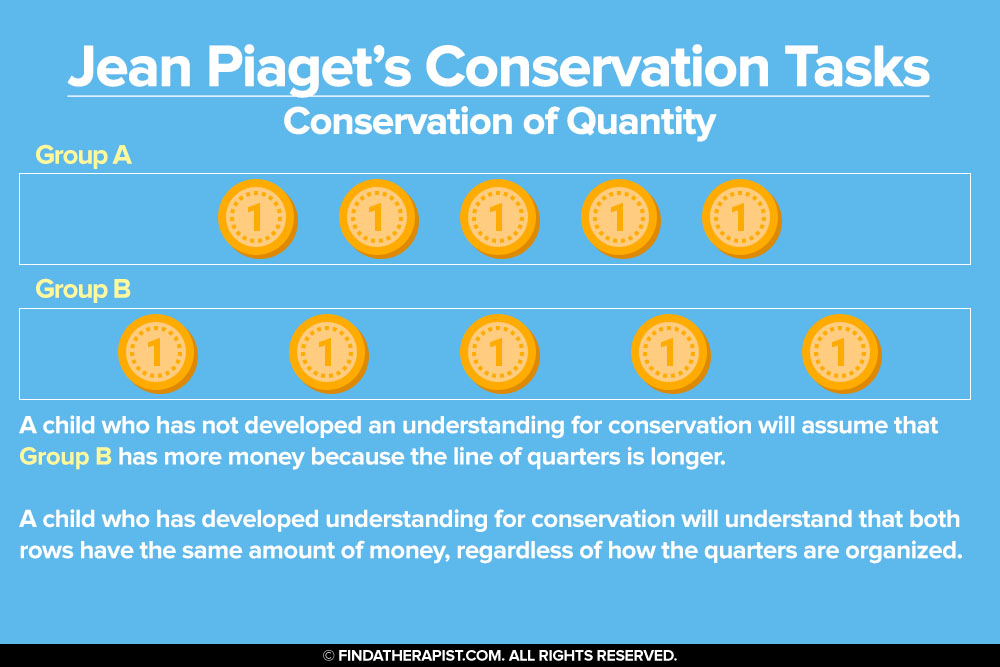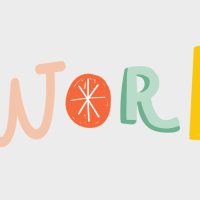Concrete Operational Stage
Published on March 25th, 2020
Updated on January 2nd, 2024

Contents
The concrete operational stage is the third of four stages in Jean Piaget’s theory of cognitive development. Jean Piaget centered his work as a psychologist around the development of children. The theory of cognitive development is among his most influential theories.
There are 4 stages in Piaget’s theory of cognitive development. Each stage marks milestones of cognitive function, and are separated by age. The following are the 4 stages of Piaget’s theory of cognitive development:
Sponsored by

Choose a therapist to work with and start healing with 20% off from BetterHelp.
Click Here
- Sensorimotor Stage (0 to 2 years old)
- Preoperational Stage (2 to 7 years old)
- Concrete Operational Stage (7 to 11 years old)
- Formal Operational Stage (11 years and older)
According to Piaget’s theory, the concrete operational stage occurs between 7 and 11 years old. During this stage, the child develops their ability to think with logic. They exhibit a decrease in egocentric thought. Their reasoning skills go through a process of decentration.
A child’s thought process becomes more dynamic as they develop logical thinking skills. They are able to take pieces of information to come to conclusions. They develop the ability to use inductive reasoning to draw conclusions. During this stage, deductive reasoning skills are not yet developed.
Children in the concrete operational stage develop the ability to understand concrete logic. They are able to use logic in reasoning and understanding situations. They are not yet able to understand abstract or hypothetical concepts and ideas.
Key Concepts of The Concrete Operational Stage of Cognitive Development
Jean Piaget found key changes in cognitive functioning in the concrete operational stage. These changes revolve around:
- The development of logic
- Decentration
- Decrease of egocentric thoughts
Key concepts of the concrete operational stage include:
- Inductive Reasoning
- Reversibility
- Conservation
- Decentration
Inductive Reasoning
Inductive reasoning is the ability to draw conclusions based on information that is given to the child. A child can use inductive reasoning when taking in information about their environment. They will make connections between specific information and apply them to general rules for how the world works.
Example: Lenny has a father who is tall. His father works as a painter. Lenny knows that painters must be able to reach high walls.
Lenny draws the conclusion from connecting two observations. His statement is as follows: “My father is tall. He works as a painter. All painters must be tall.”
A child in this stage of development can take information from specific situations and generalize them. They reason and draw conclusions based on what they learned from their specific previous experiences.
Deductive Reasoning
Children in the concrete operational stage have not yet developed the ability to use deductive reasoning. Deductive reasoning is using general information to draw a conclusion about a specific situation. An example of a method of deductive reasoning is illustrated in “if… then…” hypotheses.
Deductive reasoning uses syllogisms. A syllogism is the process of coming to a specific conclusion after considering different true points that are true.
Example: If A = B, and B = C, then A = C.
Basic syllogisms are understandable for a child in the concrete operational stage. More complex syllogisms are difficult for them to understand.
Example: Every female dog can have puppies. Cassie is a female dog. Therefore, she can have puppies.
Reversibility
Children begin to understand reversibility in the concrete operational stage. Reversibility refers to the understanding that objects can be changed and return to their original state.
Example: A child in this stage understands that flat bicycle tires can be refilled with air. They can return to their original inflated state. They also understand that shattered glasses cannot be un-shattered.
Children strengthen their understanding of reversibility in school. Lessons in mathematics teach the concept of reversibility. Addition and subtraction serve as prime examples of reversibility. Children learn how to add and subtract. This teaches them that increased quantities can be reduced to their original state.
While learning reversibility, the child learns that the concept cannot be applied to all situations. They learn that some altered objects and situations can be reversed, while others cannot.
Conservation
Developing an understanding for conservation occurs in the concrete operational stage. Conservation is the ability to understand that quantities remain the same even if they are somehow manipulated. Children begin to learn that relative measurements stay constant, even if the presentation is changed.
Relative measurements that are observed in the law of conservation include:
- Time
- Length
- Mass
- Area
- Quantity
- Volume
- Weight
Piaget studied how children perceived conservation through conservation tasks. The conservation tasks were a series of observational experiments. In these experiments, measurements remained the same but the presentation was different. children were observed to see how they understood measurements when presented differently.
Piaget’s Conservation Tasks
Jean Piaget’s conservation tasks observed how children understand the concept of conservation. The children were presented with two sets of equal measure, but with different presentations. Children in the preoperational stage did not understand that quantity was the same in both sets.
Example: Children in the preoperational stage are presented with two rows of quarters. Each row has 6 quarters. Row A had the quarters spaced one inch apart. Row B had the quarters spaced 3 inches apart.
When asked which row has more quarters, children in the preoperational stage would state that Row B has more quarters. This was because Row B was physically longer.
Children in the concrete operational stage understood that each row had an equal amount of quarters. They understood this even though Row B was longer than Row A.

Decentration
Decentration is the process of developing the understanding that the way the child sees the world is not the same as how everyone sees the world. In the process of decentration, the child begins to understand that people’s perceptions are different. They understand that different people have different thoughts, feelings and life experiences.
As a result of decentration, the child develops an understanding for conservation. They also exhibit a decrease in egocentric thought.
Decreased Egocentrism
In the preoperational stage of cognitive development, children exhibit egocentric thinking. This means that the children in this stage assume that all people see the world as they see the world. They assume that all people think the same as them, want the same things, and have the same point of view.
Once a child reaches the concrete operational stage of development, they begin to understand that this is not true. As the child progresses through the concrete operational stage, they understand that not everyone thinks the same as them. They understand that people have different life experiences, different thoughts and different feelings.
Piaget’s Mountain Task
Jean Piaget developed the theory of egocentrism after performing his Mountain Task experiment. In this study, Piaget sat the children being observed in front of a model of a mountain range. Piaget sat on the opposite side of the mountain range model. Piaget asked the child to observe the model and describe what Piaget was seeing.
In this study, children in the preoperational stage described an image that reflected what they saw on their side of the mountain range. This trend exhibited egocentric thought “He sees what I see.”
Children in the concrete operational stage described the image that Piaget may be seeing from his side of the mountain range. They exhibited understanding that his perspective is different than theirs. According to Piaget’s theory, this observation represents a decrease of egocentric thought.
Sponsored by

Find an affordable therapist online with 20% off from BetterHelp.
Click Here






Leave A Reply